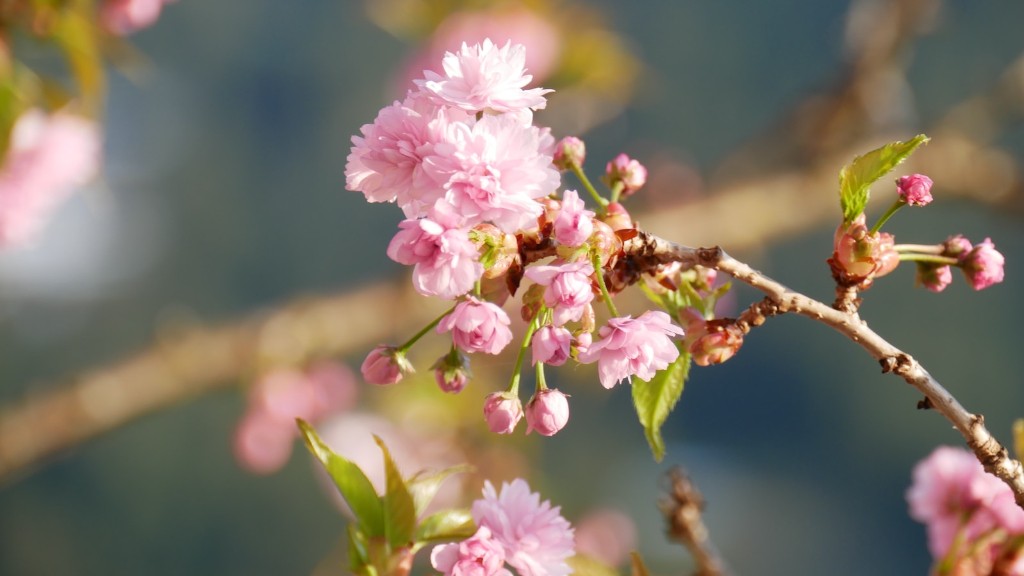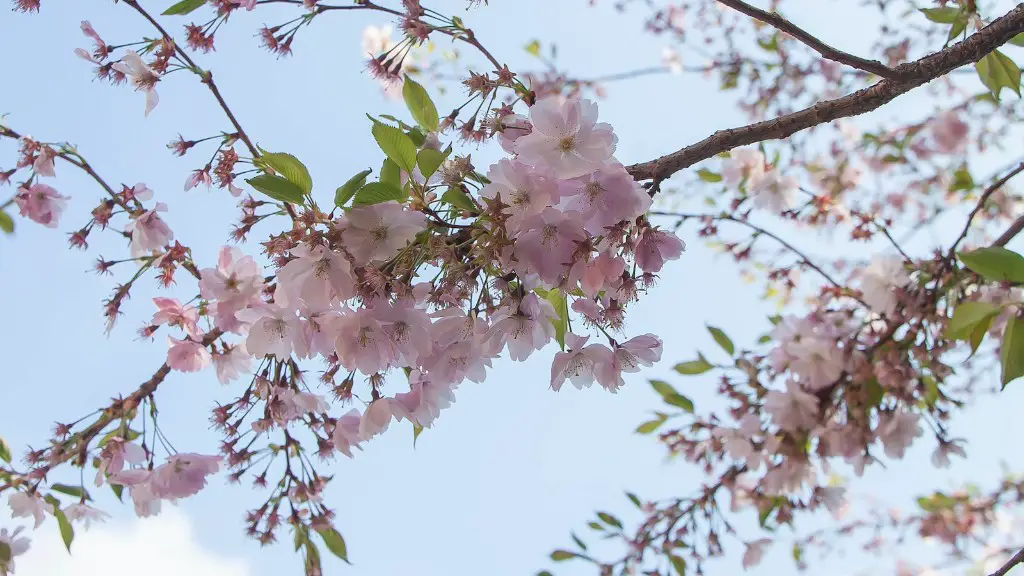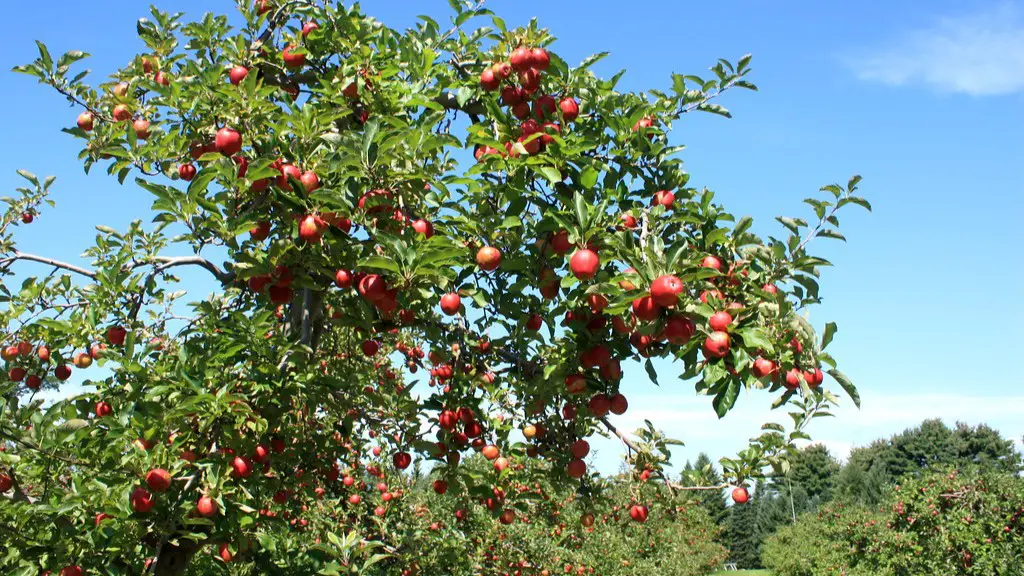Introduction
Japanese Beetles are a major pest for many different types of fruit trees in many parts of the world, including cherry trees. These beetles are voracious eaters and can cause serious damage to trees if left unchecked. Fortunately, there are some simple steps that homeowners can take to keep these insects from damaging their cherry trees. In this article, we’ll look at how to identify Japanese Beetles, what measures you can take to keep them away from your cherry tree, and how to disrupt their life cycle to limit their damage.
Identifying Japanese Beetles
Japanese Beetles are easily recognizable due to their distinctive metallic green and copper color. They also have distinctive white spots on their backs, and their front legs have ridges that curve outward. Japanese Beetles are generally active between June and August and they feed on the foliage of a wide variety of plants, including cherry trees. They are also attracted to ripened fruit and will feed on it if given the chance.
Preventing Japanese Beetles
The best way to keep Japanese Beetles away from your cherry tree is to plant it in an area that has little to no infestation from the beetle. If you live in an area where Japanese Beetles are common, then choose a variety of cherry tree that is less attractive to the beetle for planting in your yard. You can also reduce the attractiveness of cherry trees to Japanese Beetles by pruning away any damaged or diseased branches, as these provide the perfect environment for the beetles to feed on. Lastly, be sure to monitor your cherry tree for signs of infestation and treat the affected areas as soon as possible.
Disrupting the Life Cycle
Once your cherry tree has been established, there are several ways to disrupt the life cycle of Japanese Beetles. Hand picking is one of the most effective methods as it removes the adult beetle directly from the tree. If this is not an option, then you can also use pesticides to control the beetle population. Be sure to select a pesticide that is specifically designed for use on Japanese Beetles, as other insecticides may be ineffective or even cause more damage to your tree. Pesticides should be applied in the early morning or late evening when the beetles are less active.
Attracting Natural Predators
One of the simplest ways to keep Japanese Beetles away from your cherry tree is to encourage natural predators. Predators such as birds, lizards, and ladybugs will feed on the beetles and limited their numbers. To attract these natural predators to your yard, be sure to provide them with an adequate food source such as flowering plants, shrubs, and trees. You can also place bird feeders in your yard to attract birds, which will provide extra nutrition for them and make them more likely to stay and feed on the beetles.
Conclusion
In conclusion, Japanese Beetles can be a serious threat to your cherry tree if left unchecked. However, by following the simple steps outlined in this article, you can effectively protect your tree from these pests. Be sure to identify Japanese Beetles, take preventive measures to keep them away, disrupt their life cycle, and attract natural predators to your yard. With a little bit of effort, you can keep these beetles away and enjoy a healthy, thriving cherry tree.
Insecticides
Insecticides are chemical products designed to kill insects. They can be used to help control the population of Japanese Beetles on your cherry tree. If you choose to use an insecticide, be sure to select one that is specifically designed for use against Japanese Beetles, as other insecticides may not be as effective or could potentially cause more damage to your tree. Insecticides should be applied when the beetles are least active, such as in early morning or late evening, to maximize their effectiveness. Additionally, be sure to follow the directions listed on the product carefully to ensure that it is applied correctly and safely.
Advanced Traps
Advanced traps can be used to capture and kill Japanese Beetles before they can damage your cherry tree. These traps work by luring the beetles in with a scented bait, such as a pheromone-based lure, and then trapping them within a container. These traps should be placed downwind of the cherry tree so that the beetles will be drawn to the trap. Trapping should be done regularly and the trapped beetles should be disposed of immediately to reduce the chances of them escaping and returning to the tree.
Covering the Tree
If the above methods do not keep the Japanese Beetles away from your cherry tree, then you may need to resort to covering the tree with a protective cover. This cover should be fine mesh and should be placed over the tree so that it completely covers the tree. This will prevent the beetles from getting to the tree and will protect your cherry tree from further damage. The cover should be removed every two to three weeks to provide the cherry tree with enough sunlight and air to properly grow and thrive.
Biological Control Methods
Biological control methods involve using natural predators to reduce the population of Japanese Beetles on your cherry tree. Natural predators of Japanese Beetles include birds, lizards, and ladybugs. You can attract these predators to your yard by providing them with an adequate food source such as flowering plants, shrubs, and trees. Additionally, you can also place bird feeders around your yard to make it an even more attractive place for these predators, providing extra nutrition for them and encouraging them to stay and reduce the beetle population.
Insecticide Sprays
Insecticide sprays are chemical products that are sprayed directly onto the cherry tree and its leaves to help kill Japanese Beetles. These sprays should be applied when the beetles are least active, such as in early morning or late evening, to maximize their effectiveness. Be sure to select an insecticide that is specifically designed for use against Japanese Beetles and follow the directions listed on the product carefully to ensure that it is applied correctly and safely.
Bacterial Control
Bacterial control methods involve applying bacteria to the leaves of cherry trees to help reduce the population of Japanese Beetles. These bacteria are specifically designed to attack the larvae of the beetle, preventing them from maturing into adults and reproducing. This method is an effective way to reduce the number of beetles in your yard and protect your cherry tree from damage. Additionally, this method is also safe for other beneficial insects, as the bacteria target only the beetle larvae.
Nematodes
Nematodes are a type of roundworm that can be used to help control the population of Japanese Beetles on your cherry tree. These worms will seek out and feed on the beetle larvae, effectively controlling their numbers and preventing the infestation from spreading. Nematodes are a safe and effective way to reduce Japanese Beetle infestations and they are relatively easy to apply. They come in a powdered form, which can be mixed with water and directly applied to the soil around your cherry tree.
Fungicides
Fungicides are chemical products that can be used to help reduce the numbers of Japanese Beetles on your cherry tree. These products are designed to kill fungi, which can often attract the beetles to a particular tree. If the beetles are attracted to the fungi, then treating the tree with a fungicide can help reduce the number of beetles on the tree. Fungicides should be applied in early morning or late evening when the beetles are least active to maximize their effectiveness.
Cultural Control Methods
Cultural control methods involve taking steps to reduce the attractiveness of your cherry tree to Japanese Beetles. This can include pruning away any damaged or diseased branches as these provide the perfect environment for the beetles to feed on. Additionally, keeping the area around your cherry tree free of debris such as dead leaves or fallen fruit can help reduce the number of beetles attracted to the tree. Finally, be sure to monitor your tree for signs of infestation and treat the affected areas as soon as possible.



